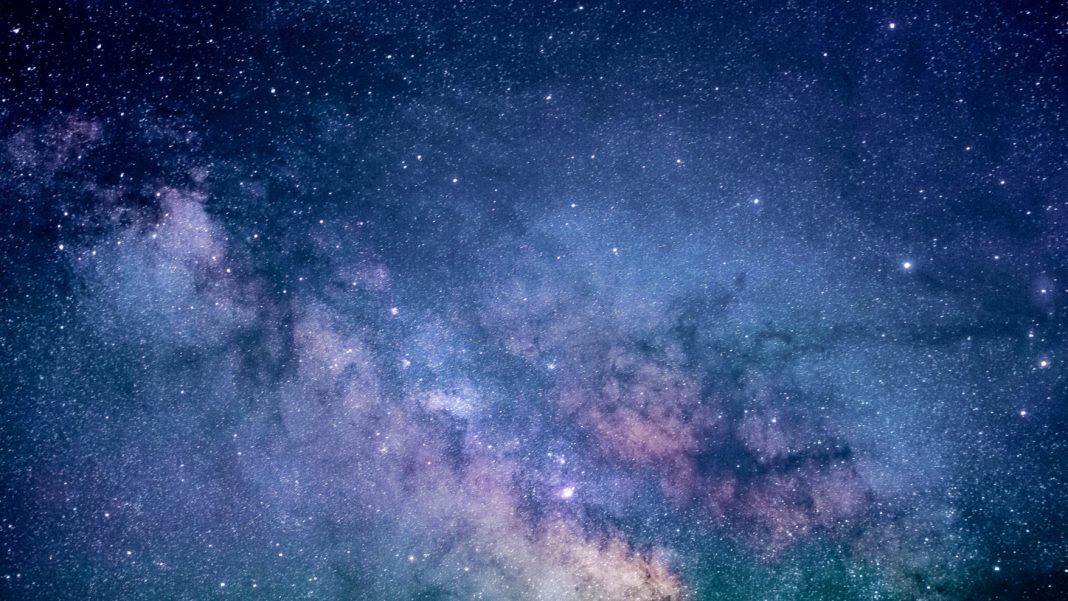Edinburgh, Sept 21: It is almost 100 years since scientists discovered the universe is expanding. In the decades that followed, the accuracy of the measurements, and interpretations and implications of this discovery, were a source of fierce debate. We now know the universe emerged dramatically from a highly compressed state in an event known as the Big Bang.
Measurements of the present-day expansion rate, known as the Hubble constant or H₀ (pronounced H-naught), have improved considerably since those early days. However, a new debate now grips the astronomy community: two independent measurements of H₀, which should agree, give different results. This situation has become known as the “H₀ tension”, or Hubble tension.
Numerous conferences, review articles and journal papers have been dedicated to this issue. Some refer to it as a “crisis” for cosmology”, requiring a paradigm shift in our understanding of the universe. The expansion of the universe is a key aspect of its history since the Big Bang, so it underpins many other elements of our understanding.
Others view the H₀ tension simply as a sign that the measurement teams do not fully understand their data and that, with better data, the “crisis” will be resolved. But its solution remains elusive.
The two measurement methods at the centre of this debate are the “distance ladder” and the “cosmic microwave background”. The distance ladder is the older of the two, and has been used in various forms since the earliest detection of the universe’s expansion.
The first evidence came from pioneering measurements of faint cloud-like objects that we now know to be galaxies outside the Milky Way. American astronomer V.M. Slipher measured the chemical signatures in the light from these objects. Using the technique of spectroscopy to match these signatures with those of known molecules, he found their wavelengths were stretched compared with standard laboratory results.
This stretching of the wavelengths of light from other galaxies, known as “redshift”, is caused by the Doppler effect. This phenomenon is also responsible for the pitch of a wailing siren increasing as an emergency vehicle approaches, then decreasing as it passes. In a seminal 1917 article, Slipher announced that almost all the galaxies he’d observed were receding from the Milky Way.
Slipher’s data would go on to be used by Edwin Hubble in his famous 1929 study showing that the more distant a galaxy is, the faster it recedes and hence the greater its redshift. The ratio between redshift and distance is the Hubble constant.
Expansion of the universe had already been anticipated by theorists. In the early 1920s, Alexander Friedmann and Georges Lemaître independently realised that Albert Einstein’s recently published theory of general relativity could predict an expanding universe, and that the implications of this would be galaxy redshifts that increase with distance.
Distance ladder
Distant galaxies are being dragged away from us because of the universe’s expansion. Measurements of the Hubble constant rely on determining the connection between the distance of these objects and the speed at which they are receding.
For this reason, the units of H₀ are conventionally “kilometres per second per megaparsec”, referring to the speed of an object one megaparsec away (a unit of distance used by astronomers, equivalent to about 3 million light years).
Just as Slipher did a century ago, recession speeds can be readily measured using spectroscopy. However, accurate distance measurements to galaxies are notoriously difficult, so this is where the distance ladder comes in.
The lowest “rung” of the ladder represents objects in the sky that are close enough that we can use direct methods to measure distance – such as the parallax method, where the motion of the Earth around the Sun creates periodic shifts in the angular position of the objects. The subsequent rungs represent measurements of progressively more distant sets of objects.
These are chosen to be objects for which it is easy to measure relative distances but, like a ruler with no numbers on it, their absolute distance must be calibrated. This function is provided by objects on the lowest rung.
Cepheids – bright and massive stars that pulsate – are particularly useful as rungs due to the tight correlation between their pulsation period and brightness, discovered by Henrietta Swan Leavitt in 1908. The most distant rung is usually formed by Type 1a supernovae (explosions that occur when certain stars reach the ends of their lives), which have also provided definitive evidence that the universe’s rate of expansion is increasing.
Cosmic microwaves
The other measurement method at the centre of the debate is the cosmic microwave background (CMB). This is light emitted when the universe was just a few hundred thousand years old – long before stars or planets had formed. Instead, a hot plasma filled all of space, almost perfectly uniform except for sound waves thought to have their origin at the Big Bang.
The physics of the universe at this time is surprisingly simple, so we can make robust predictions about the properties of these waves. When combined with precision measurements, our mathematical models tell us what the expansion rate of the universe was at this early time. With a model for the subsequent expansion history, we can make an extremely precise prediction of H₀.
Now, let’s look at what each method finds for H₀. The most precise distance ladder measurement comes from the SH0ES scientific team led by Nobel laureate Adam Riess. Their latest measurement gives H₀ = 73.2km per second per megaparsec. The most precise CMB measurement, from the European Space Agency’s Planck satellite team, is H₀ = 67.4km per second per megaparsec.
Even though these two measurements are within 10% of each other, the difference is huge compared with the percent-level precision of each measurement. It’s also above the “5 sigma” statistical threshold conventionally taken by scientists as indicative of an event that is not purely due to random chance.
So, what could be causing this large discrepancy between the two measurements? One culprit could be that the model used to predict H₀ from the CMB is wrong. Perhaps an alternative model for the universe would reconcile the CMB prediction with the distance ladder measurement. There has been intense activity amongst theorists along these lines over the past few years.
The main obstacle is that the evolution of the universe is strongly constrained by a range of robust measurements accumulated over decades. Furthermore, the CMB measurement of H₀ is corroborated by independent measurements of comparable precision using surveys of galaxies. The latest such measurement from the Dark Energy Spectroscopic Instrument (Desi) collaboration gives H₀ = 68.5km per second per megaparsec, with roughly 1% precision –- in agreement with the CMB value.
Getting creative
Theorists have therefore had to get creative. One suggestion is that the very early universe went through a sudden phase of enhanced expansion prior to the CMB being emitted. This made the first atoms form sooner than standard expectations. The idea is that the “standard” CMB measurement of H₀ neglected this effect and inferred that the Hubble constant was smaller than it really is.
The challenge for solutions of this sort is that they must also predict the other detailed patterns seen in the CMB, which have been measured with exquisite precision by the Planck satellite and other telescopes.
Other proposed solutions include suggestions of magnetic fields affecting the formation of the first atoms, or even that Earth resides in an atypical part of the universe that has expanded to an unusually large extent. Disappointingly, none of the proposed solutions is both compelling and able to fit all the available data.
An alternative, if more prosaic, line of reasoning is that our physical picture of the universe is correct, but that one or more of the measurements has neglected some observational effect. This has fuelled intense interrogation of the SH0ES and Planck measurements, both by the astronomy community and the teams themselves. So far, no errors have been discovered in either analysis.
The road ahead
So, what is the way forward? Some highly promising techniques using alternative rungs in the distance ladder have recently emerged as competitive to the SH0ES measurement.
A team led by Wendy Freedman, an American pioneer of modern H₀ studies, has used particular stars that fall into a category known as the “tip of the red giant branch” (TRGB) to make new calibrations of supernovae distances. This method can avoid uncertainties inherent in the use of Cepheids. Intriguingly, it gives H₀ = 69.8 – a constant in between Planck and SH0ES, albeit with larger uncertainties.
Furthermore, Freedman’s team recently found a discrepancy between galaxy distances implied by TRGB stars and Cepheids using the James Webb Space Telescope (JWST). If corroborated by future analyses, this discrepancy would place the distance ladder approach on a much more uncertain footing.
The quality of H₀ measurements will inevitably improve with new data from JWST, new samples of supernovae, and innovative techniques such as using gravitational waves from merging black holes. But whether these efforts will resolve the Hubble tension, or worsen it, remains to be seen.
For now, our understanding of the universe continues to be dogged by disagreement in measurements of the expansion rate. One hundred years after its conception, the Hubble constant continues to confound us. (PTI)




